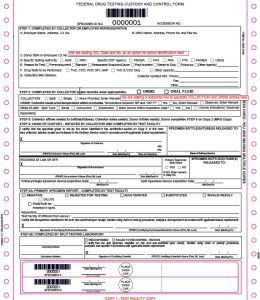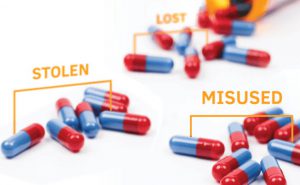 Quest Diagnostics proudly celebrates the 30th anniversary of the Drug Testing Index™ (DTI). Published annually, the DTI reveals insights into patterns of drug use among the American workforce. During the past 30 years, we have seen both the public and private sectors use substance abuse testing programs to deter drug use in the workplace. Our timeline tracks both the progress of the testing industry and illustrates our company’s steadfast commitment to helping to keep workplaces drug-free. Today, we take a deeper look at overall positivity rates and key milestones from 1998 to 1992.
Quest Diagnostics proudly celebrates the 30th anniversary of the Drug Testing Index™ (DTI). Published annually, the DTI reveals insights into patterns of drug use among the American workforce. During the past 30 years, we have seen both the public and private sectors use substance abuse testing programs to deter drug use in the workplace. Our timeline tracks both the progress of the testing industry and illustrates our company’s steadfast commitment to helping to keep workplaces drug-free. Today, we take a deeper look at overall positivity rates and key milestones from 1998 to 1992.
On September 15, 1986, Executive Order 12564 established the Federal Workplace Drug Testing Program for Federal employees which established the scientific and technical guidelines for Federal workplace drug testing. US Health and Human Services (HHS) published these rules in in the Federal Register on April 11, 1988 (53 FR 11979). On November 18, 1988, President Ronald Reagan signed the Drug-Free Workplace Act into law. The U.S. Department of Transportation (DOT) published conforming rules in December 1989 (54 FR 49854) mandating drug testing of private-sector employees in its regulated transportation industries. The Federal guidelines and rules became the “industry standard” for employee drug testing and many non-regulated employers either modified their policies or created new policies consistent with the Federal requirements.
The first Drug Testing Index was published as a public service to industry, government and media. This release summarized the results of workplace drug tests performed in 1988, reporting the overall positive prevalence rate (“positivity”) – the number of specimens reported positive as a percentage of the total number of specimens tested. The 1988 overall positivity was 13.6%, meaning nearly one in every seven drug tests were positive.
Legislation and public opinion began to focus on drug testing. The Anti-Drug Abuse Act of 1988 was a landmark piece of legislation that took steps towards reducing illicit drug use in America. One year later, the U.S. Supreme Court upheld the constitutionality of drug testing railroad employees in Skinner vs. Railway Labor Executives Association despite challenges from labor unions that stated drug testing violated the Fourth Amendment. That same year, the DOT issued the first urine drug testing rules. Throughout the 1980s, the Drug Enforcement Administration (DEA) grew as it continued its mission to enforce of the Controlled Substances Act and to combat drug smuggling and use in the United States.
In 1989, major U.S. corporations implemented drug testing policies including AmTrak, Bank of America, Cigna, and Nordstrom. That same year, the DOT issued the first urine drug testing rules.
The world of sports also made strides towards ensuring competitors are drug-free. Sprinter Ben Johnson was disqualified from the Seoul Olympic Games and stripped of his 100 meter gold medal after testing positive for steroids. In 1990, Congress passed the Anabolic Steroids Control Act and that same year the National Collegiate Athletic Association (NCAA) adopted a year-round drug testing policy with random testing for drugs and steroids for Division I and II athletes. The NCAA already drug tested at post-season championship events.
In the 1991 data, the DTI refined its reporting by adding positivity by drug test type, grouping the data into two segments: “Federally-Mandated Safety Sensitive” (FMSS) required drug testing and “General Workforce” (GW) or private sector testing pursuant to company policy. In the 1992 data, the DTI also added positivity by testing reason (e.g. pre-employment or random) for the FMSS group. By 1992, the overall positivity rate fell to 8.8%, down from the 13.6% first reported for 1988.
For more information, visit QuestDiagnostics.com/DTI.




















On September 15, 1986, Executive Order 12564 established the Federal Workplace Drug Testing Program for Federal employees which established the scientific and technical guidelines for Federal workplace drug testing. US Health and Human Services (HHS) published these rules in in the Federal Register on April 11, 1988 (53 FR 11979). On November 18, 1988, President Ronald Reagan signed the Drug-Free Workplace Act into law. The U.S. Department of Transportation (DOT) published conforming rules in December 1989 (54 FR 49854) mandating drug testing of private-sector employees in its regulated transportation industries. The Federal guidelines and rules became the “industry standard” for employee drug testing and many non-regulated employers either modified their policies or created new policies consistent with the Federal requirements.
The first Drug Testing Index was published as a public service to industry, government and media. This release summarized the results of workplace drug tests performed in 1988, reporting the overall positive prevalence rate (“positivity”) – the number of specimens reported positive as a percentage of the total number of specimens tested. The 1988 overall positivity was 13.6%, meaning nearly one in every seven drug tests were positive.
Legislation and public opinion began to focus on drug testing. The Anti-Drug Abuse Act of 1988 was a landmark piece of legislation that took steps towards reducing illicit drug use in America. One year later, the U.S. Supreme Court upheld the constitutionality of drug testing railroad employees in Skinner vs. Railway Labor Executives Association despite challenges from labor unions that stated drug testing violated the Fourth Amendment. That same year, the DOT issued the first urine drug testing rules. Throughout the 1980s, the Drug Enforcement Administration (DEA) grew as it continued its mission to enforce of the Controlled Substances Act and to combat drug smuggling and use in the United States.
In 1989, major U.S. corporations implemented drug testing policies including AmTrak, Bank of America, Cigna, and Nordstrom. That same year, the DOT issued the first urine drug testing rules.
The world of sports also made strides towards ensuring competitors are drug-free. Sprinter Ben Johnson was disqualified from the Seoul Olympic Games and stripped of his 100 meter gold medal after testing positive for steroids. In 1990, Congress passed the Anabolic Steroids Control Act and that same year the National Collegiate Athletic Association (NCAA) adopted a year-round drug testing policy with random testing for drugs and steroids for Division I and II athletes. The NCAA already drug tested at post-season championship events.
In the 1991 data, the DTI refined its reporting by adding positivity by drug test type, grouping the data into two segments: “Federally-Mandated Safety Sensitive” (FMSS) required drug testing and “General Workforce” (GW) or private sector testing pursuant to company policy. In the 1992 data, the DTI also added positivity by testing reason (e.g. pre-employment or random) for the FMSS group. By 1992, the overall positivity rate fell to 8.8%, down from the 13.6% first reported for 1988.
For more information, visit QuestDiagnostics.com/DTI.